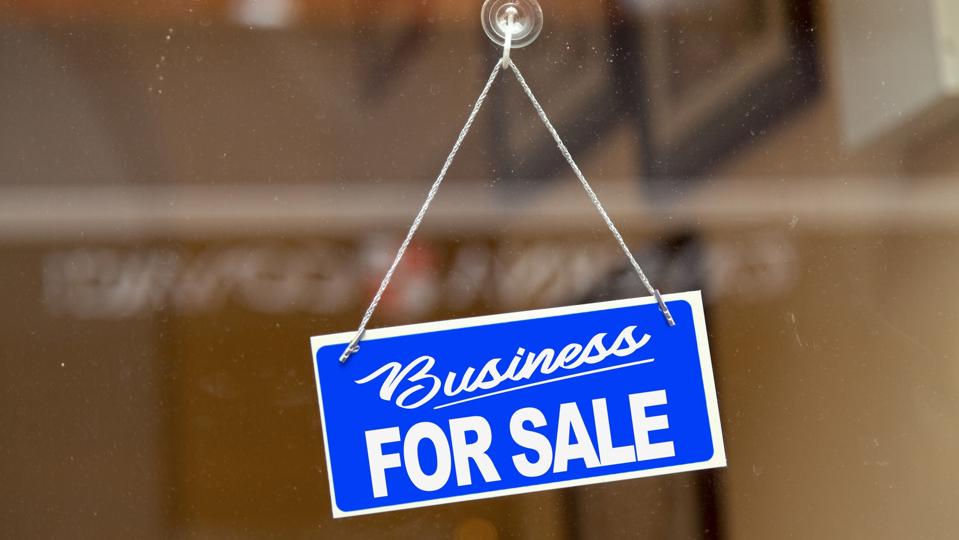‘This Uncertainty Isn’t Always Going To Exist’ |
| At the end of 2024, as interest rates and inflation were dropping, private equity dry powder was piling up and a new president who many thought would be business-friendly was preparing to return to Washington, businesses, banks and analysts thought this would be a huge year for M&A transactions. We all know what happened instead. President Donald Trump’s second term has been full of new ideas on the economy: Tariffs on nearly every country with percentages and effective dates that for months seemed to change by the day, canceled incentives and federal grants from the previous administration, and a domestic economy that has often frozen in place because nobody is sure what to expect next. But M&A hasn’t stopped altogether. A mid-year trend report from PwC Global found that while the number of M&A deals in the first half of 2025 was down 9% year-over-year, deal values were up 15%. And while three in 10 U.S. companies had paused or revisited pending deals this spring, PwC found that 51% were still pursuing deals. This month, many of Trump’s new tariffs have solidified and are actually being collected. The recently passed so-called “Big Beautiful Bill” also puts in place financial policy for the next several years. No matter how good or bad that is for companies, it gives them something that’s been elusive so far this year: A baseline to work from in making financial projections. And while finance professionals and analysts say that companies are still approaching transactions with great care, the M&A doors are reopening. Today’s Forbes CFO newsletter focuses on today’s M&A market: What the landscape looks like, who should be making deals, and what companies approaching the buy and sell markets should do. I spoke with two M&A experts and advisers—Bill Haemmerle, partner in the transaction advisory service practice at Wiss & Company; and Scott Mozarsky, the co-CEO and managing director of M&A advisory firm JEGI LEONIS—about it, and their comments are throughout this newsletter.
If you like what you read here, you can easily share it online and on your social media pages. This newsletter, and all previous editions of Forbes CFO, can be found on our website here.
Until next time. |
|
 | | Bill Haemmerle, partner in the transaction advisory service practice at Wiss & Company. Wiss & Company |
|
| Since the beginning of the year, many companies that had been interested in deals just seemed to put things on hold, according to Haemmerle. He currently works with lower middle market companies, and many of the potential deals involving companies that were likely to be touched by tariffs—especially those dealing with manufacturing, importing and transportation—were paused. Now that there’s some certainty out there, Haemmerle said, the larger deal market is restarting. He said that kind of activity takes a few months to get to the companies he works with, but it’s coming. “I always view that as the canary in the coal mine—when folks are calling us about financial due diligence, quality of earnings—that things are starting to pick up again,” he said. Wiss has recently been working with companies on deals across a spectrum of industries. These include services businesses in areas that are less likely to be impacted by tariffs and had seen M&A activity in the beginning of the year—HVAC, engineering and healthcare—as well as others that are more affected, including manufacturing and transport. Mozarsky, who works a lot with software companies, especially those with vertical functions in areas like legal compliance, payments and supply chain, said that concerns about the full impact of tariffs—including the end impact on consumers, who may ultimately spend less as prices get more expensive—served to slow down the M&A process in the first half of the year. But now, he said, things are more active. Much of that activity is among groups that were ready to go in January, Mozarsky said. Founders who were hoping to sell off their startups to larger companies are finalizing transactions, accepting the larger risk in general, and taking a good result instead of the great result they may have been holding out for. Larger companies hoping to divest portions of their business to become more focused are going forward with those transactions for similar reasons. Private equity has also been making moves. Firms generally hold on to companies for a short span of years, but Mozarsky said the weak M&A market in the recent past may have extended those timelines a bit too much. Even though the larger economic forecast has been all over the map, he pointed out that company valuations and the stock market seem to be resilient enough for them to move forward. |
|
| SEPARATING THE NOISE FROM THE REALITY |
|
 | | JEGI LEONIS co-CEO and managing director Scott Mozarsky. JEGI LEONIS |
|
| Mozarsky said he’s seeing a lot more caution and care go into deals from all sides. While most business valuations haven’t seen huge setbacks as of now, some of them aren’t as strong as they likely would have been a year ago, when tariffs were not a concern. So acquirers are being creative. “We're seeing structures around the deals—basically earnouts and other types of structures that effectively are saying to sellers, ‘Look, you can get a great deal, but you’re going to have to prove it,’” he said. But the fear of choppy markets because of tariffs hasn’t come to bear just yet. In the short time since the August 9 effective date of most of the tariffs, markets have moved the most on positive earnings reports, investments and tech announcements. Investors, he said, have been working to look past the noise of ever-changing tariff announcements and zoom in on what truly matters: Business fundamentals. Does this deal make sense for the business? Will it bring value? Is the price fair? Are there any uncertainties that new tariff policies could awaken, and are you prepared to deal with them? Haemmerle said that if the fundamentals are right, now is a good time for M&A transactions. “If you’ve done your strategic plan, you’ve identified an opportunity in the market, and it fits well within what you’re trying to accomplish, I don’t think there's really a bad time to do a transaction, and I think you’d be missing out on the opportunity, at the cost of doing a deal,” he said. |
|
 | | Getty |
|
| For a company looking to sell itself, now is the time to get your financial house in order. Companies that can show clear figures on profitability—or the path to get there—gross margins, customer retention and meeting KPIs will have an advantage. Mozarsky said that he’s helped customers make great deals even during the last few years, which were sluggish in terms of dealmaking. “Generally, good businesses, the buy-side investors will be willing to pay a high price for them,” he said. “Generally, the debt markets will be supportive of deals involving those businesses, which allows buyers to pay a higher price for them. And generally, sellers will get very good ROI on their investments because they’ve done a good job working with the management team, or the management team has done a good job of building a good business.” To keep a high valuation, Mozarsky advised companies to maintain their top level of performance: Move toward profitability, invest in the future, and continually develop new technologies and ideas, such as generative AI. Differentiation is also key: What specific value would a buyer get from purchasing your specific company? Haemmerle said companies that are more likely to be impacted by tariffs or new economic policies should concentrate on getting their operations organized and in good shape—especially if the situation now seems too chaotic for a transaction. When things settle down, he said, then you’ll be ready. |
|
 | | Getty |
|
| There’s no question that many businesses have had a bumpy ride this year, and the coming quarters may be even rougher. But both Mozarsky and Haemmerle are anticipating an active end to 2025, as far as deals are concerned. Mozarsky said JEGI LEONIS has been busy this summer with the meetings, research and pitches that precede M&A deals—and there has already been a lot of activity in some of the software deals he works on, which he said is seen as tariff (and potentially recession) resilient. Mozarsky said that while tariffs are still a bit of an X factor for business, using M&A now to lock in business changes is a smart move. If a company is looking to add on to its portfolio or functions, acquiring the other business sooner rather than later allows for more definitive forecasting—and more stability if the markets vacillate on White House policy pronouncements. Haemmerele also expects more activity as the year goes on. He also hopes that CFOs who have been waffling on deals will find clarity and make the deals if they work, or renegotiate or walk away and look elsewhere if they don’t. While more risk in a deal decreases its value, Haemmerle said the big picture is important. Deals change your company profile for the long term—which is where the focus should be. “It’s short term,” he said. “I think CFOs need to remind themselves that it’s not a permanent change in the market. This uncertainty isn’t always going to exist.” |
|
Hotel and lodging company Marriott International selected Jen Mason to be its next executive vice president and chief financial officer, effective March 31, 2026. Mason joined the firm in 1992 and currently works as global officer, treasurer and risk management. She will succeed Leeny Oberg, who is retiring.
|
|
Digital advertising platform The Trade Desk appointed Alex Kayyal as its new chief financial officer, effective August 21. Kayyal most recently worked as a partner at Lightspeed Venture Partners, and he will succeed Laura Schenkein.
|
|
Private members’ club Soho House & Co announced Neil Thomson as its new chief financial officer, effective August 18. Thomson previously worked as chief financial officer of Tasty Restaurant Group, and he succeeds Thomas Allen.
|
|
| Send us C-suite transition news at forbescsuite@forbes.com. |
|
| New technology powered by generative AI and changes in the strategic role of the CFO are bringing disruption not only to the finance department, but to business as a whole. Here are some ways that CFOs can help foster these changes and keep their company ahead of the innovation curve. Fear is often thought of as a bad thing, but in the right context, it can help sharpen leaders’ instincts and decisions. In a talk earlier this summer, Perplexity CEO Aravind Srinivas highlighted how embracing a bit of fear keeps him going. |
|
| | Which airline is gradually getting caught up on flights after mass cancellations on Monday because of a strike of its unionized flight attendants? | | A. | Air Canada | | B. | Qantas | | C. | Spirit | | D. | Volaris |
| | Check if you got it right here. |
|
|